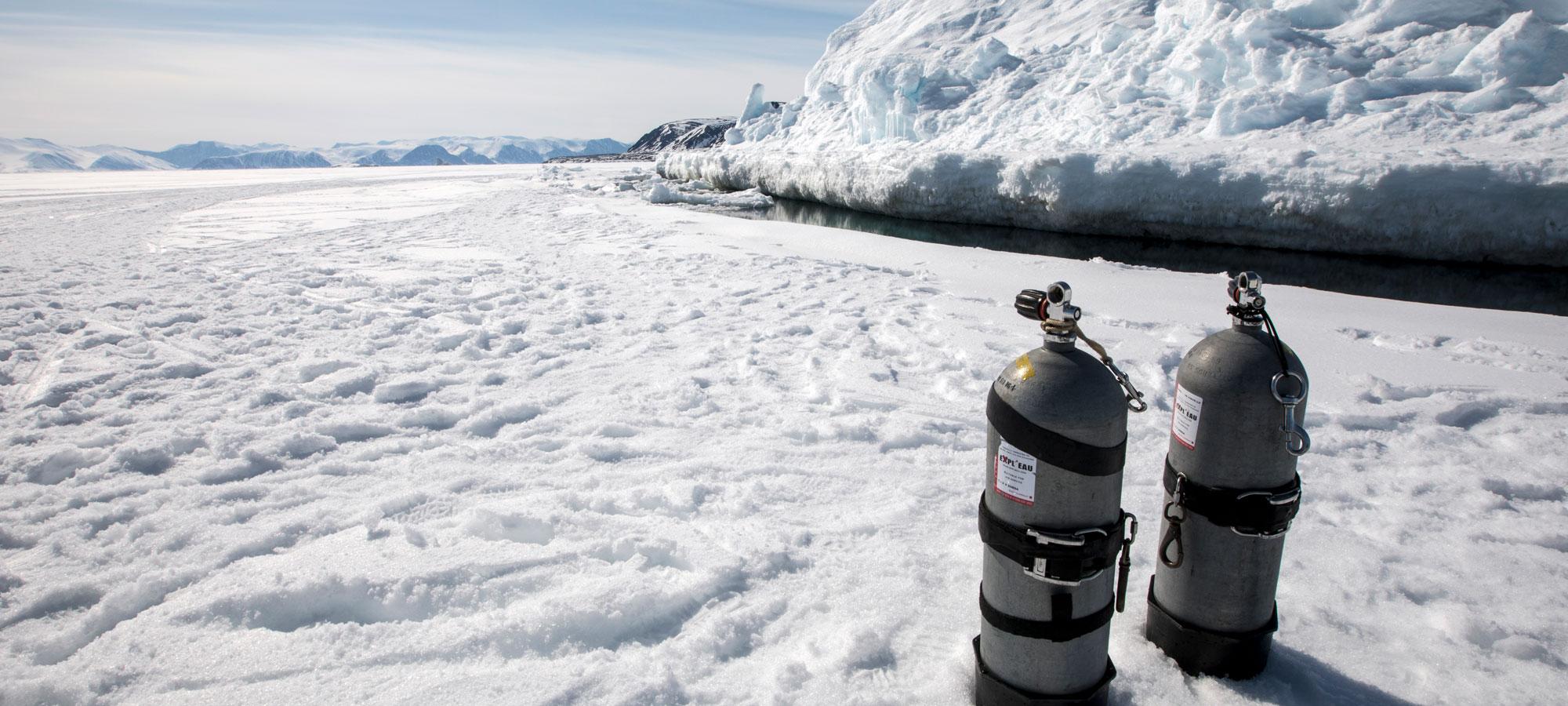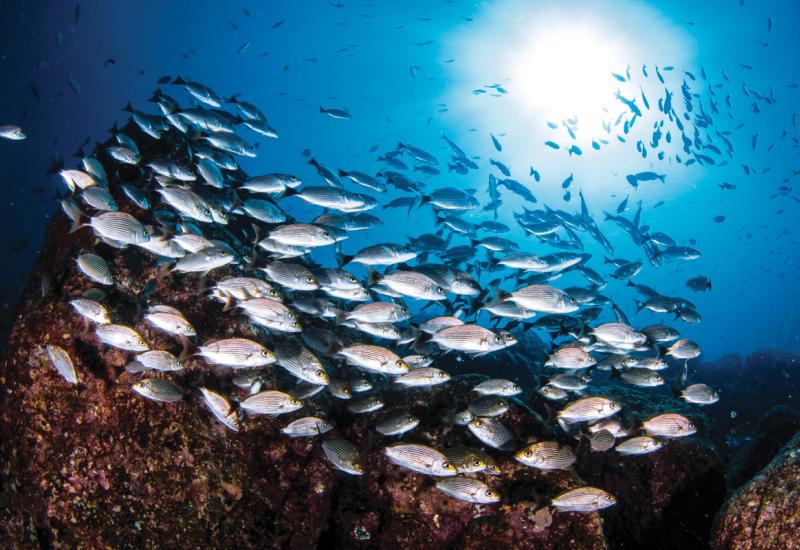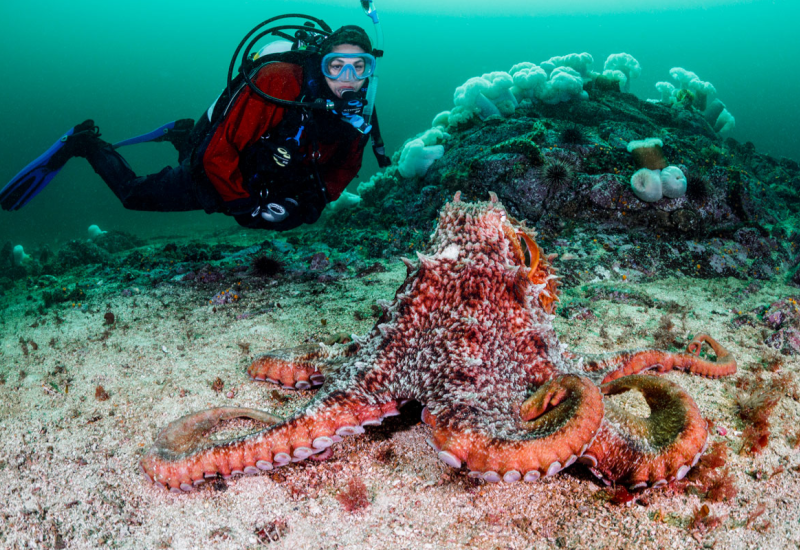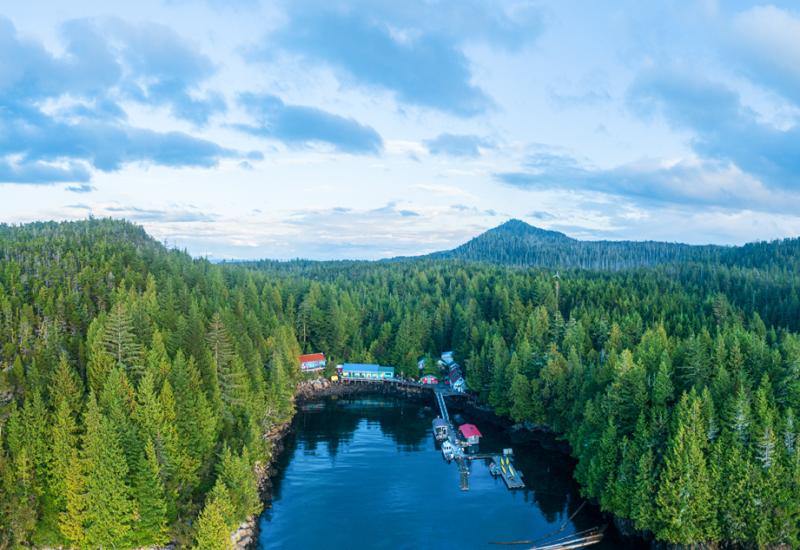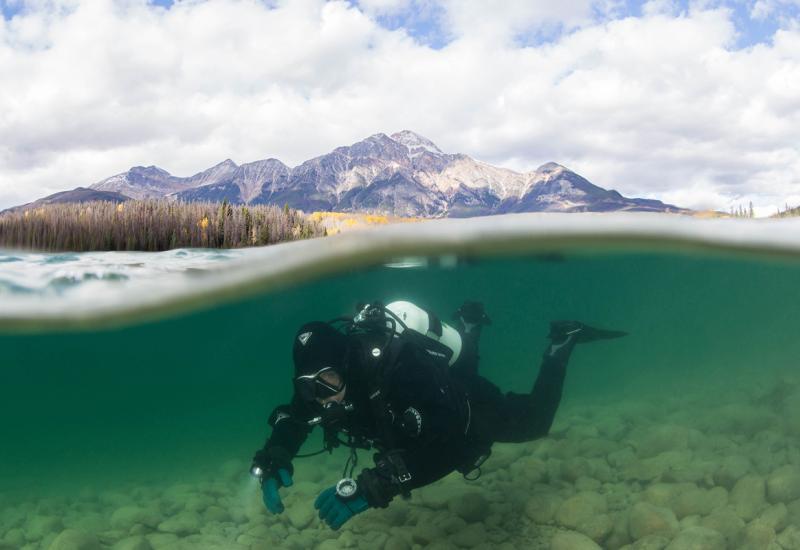Scuba Diving Canada's Great White North
You are reading "Part One - The Great White North" in Jill Heinerth's five-part, underwater Canada series. Read the entire series here.
Traveling to the polar regions is not easy, and that makes diving in the Arctic a rare privilege. With a warming planet, Canada’s Arctic landscape is experiencing transformative change, but there are still ways to have the dive of a lifetime, frolicking with belugas, narwhals, bowhead whales, and seals. You might even get a chance to see a polar bear swimming with cubs. Even if you don’t have a special encounter with the charismatic megafauna, you will be electrified by the colorful marine invertebrates and blown away by the transcendent beauty of the ice itself.
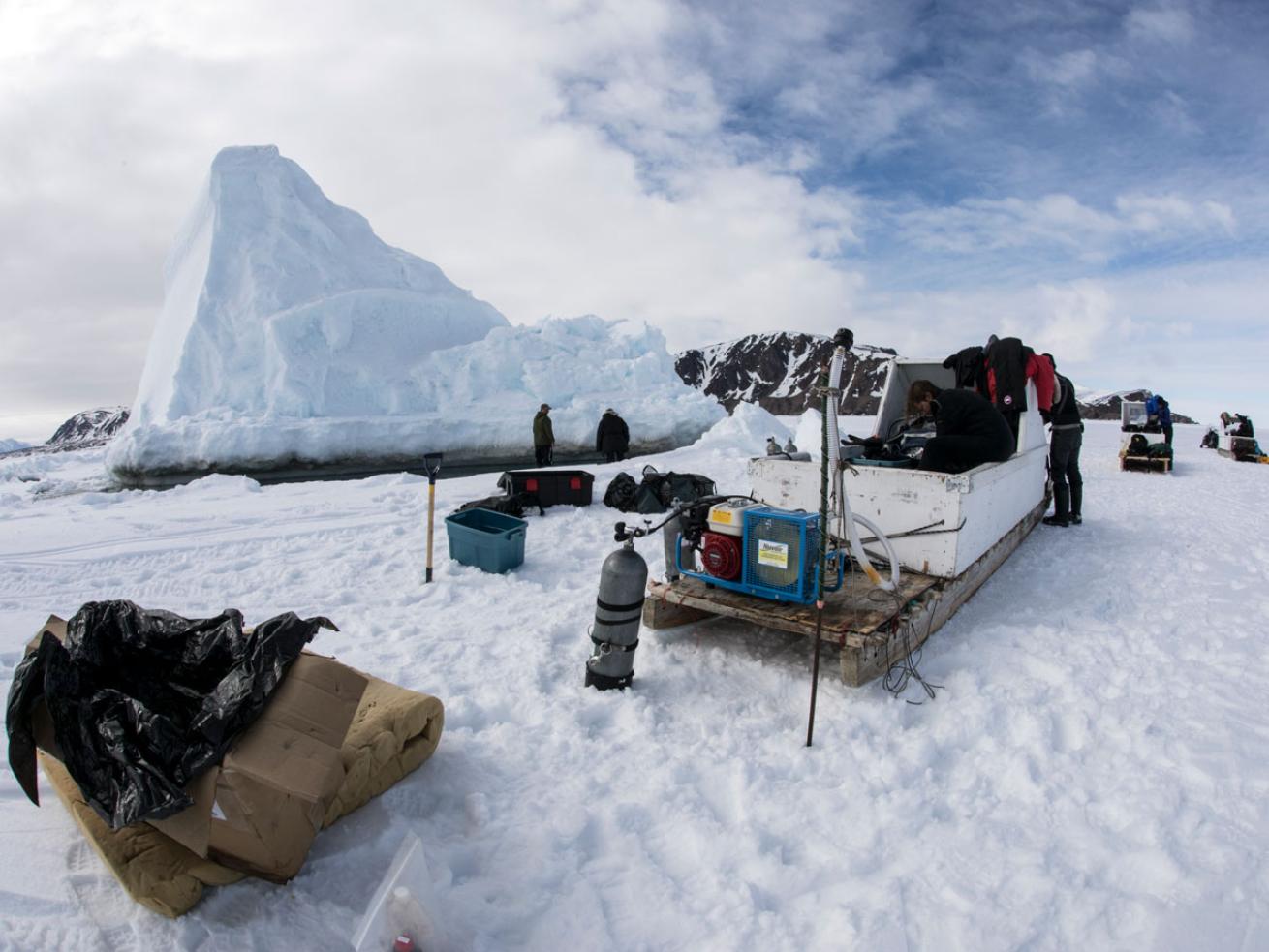
Jill HeinerthAt an iceberg near Bylot Island, this could be the northern-most air fill station.
You won’t find dive shops in the Arctic, leaving two choices for travel: some moderate-sized adventure cruise ships offer a chance to dive from rigid-hulled inflatable boats (RHIB), and one special “land-based” operator provides luxury polar safaris at the best spot for marine-life encounters.
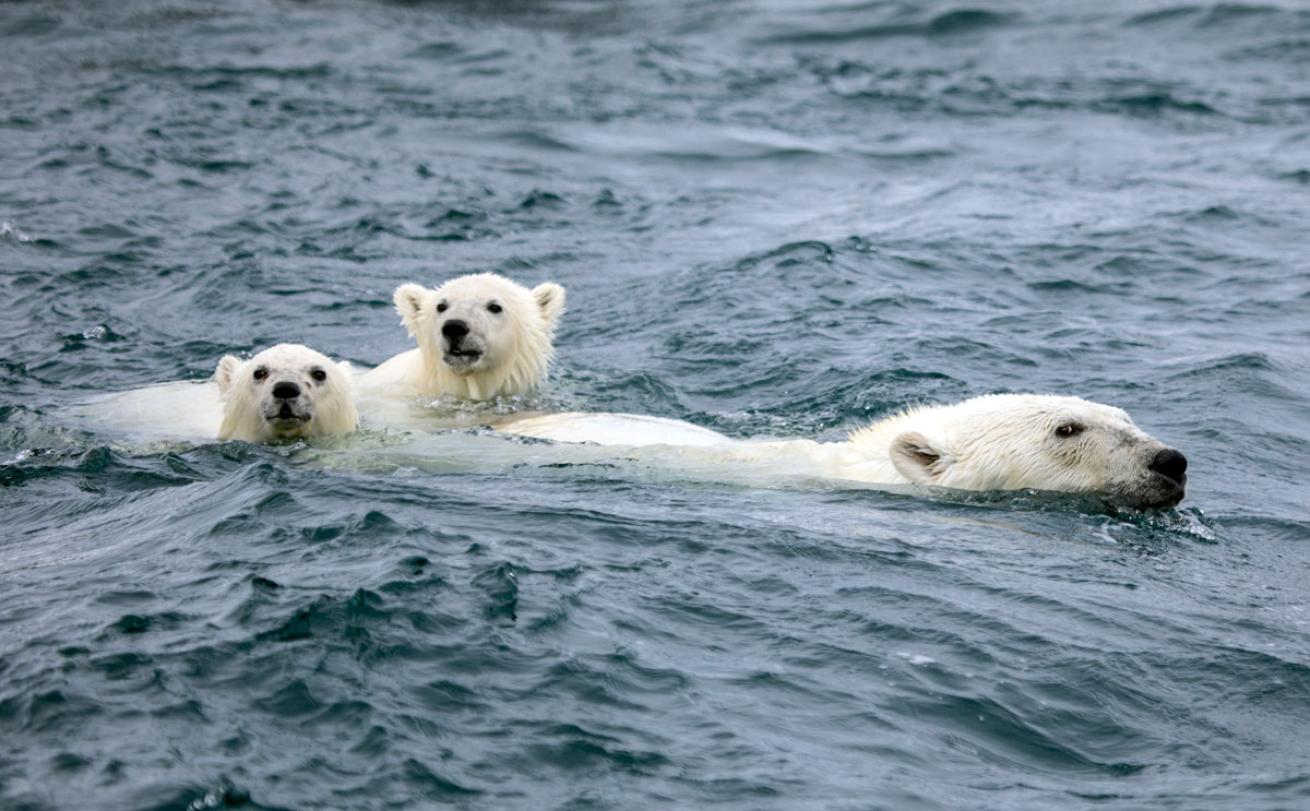
Jill HeinerthAs the climate changes and ice disappears, polar bears must spend an additional seven or more weeks in the water and on land rather than on the ice. That means you have a decent chance of seeing a swimmer, but this is one dive you will want to skip. Although I have been in the water with a polar bear, I think the risks are too great to do it again.
The “floe edge” is the location where melting sea ice meets the open ocean. It’s the site of the Arctic food chain’s early summer ocean buffet. As the days get warmer, the ice melts and breaks away, attracting sea birds, seals, whales, and polar bears. The sea ice contains rich nutrients that feed a spring plankton bloom that nourishes everything else. One of the largest animals on earth, the bowhead whale, survives on food no larger than a single grain of rice.
The Inuit people call the sea ice “The Land.” For them, it is a hunting ground and the connection to friends, family, and distant communities. Indigenous people provide diving expeditions with logistical assistance, educational opportunities and safety support. They understand the risks associated with this challenging environment and keep diving tourists protected from polar bears as well as dangerous ice and weather conditions. There is no way to safely experience Arctic diving without their help, and the payoff for traveling with local guides is that you will be spellbound by their traditional stories and experiences.
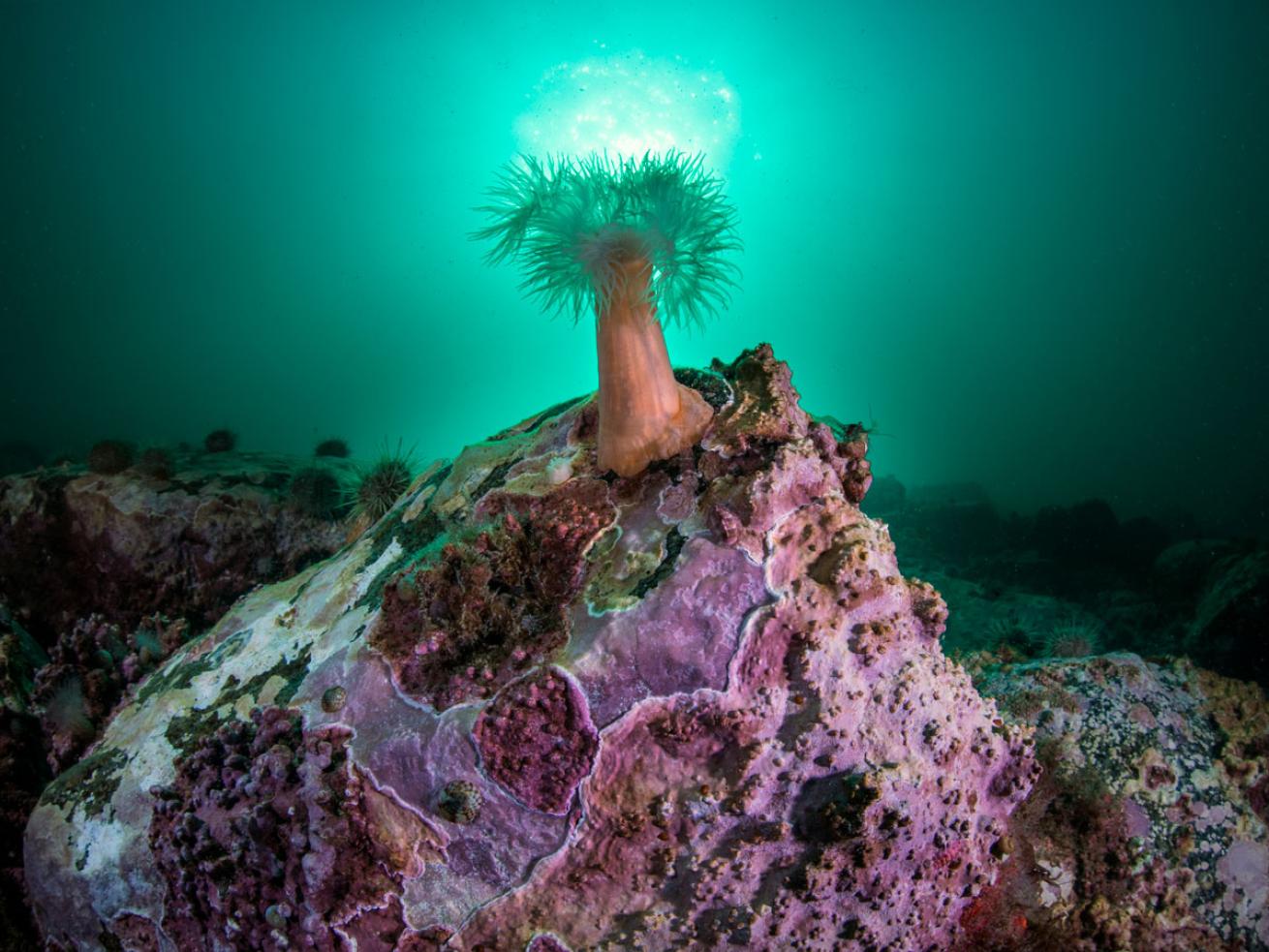
Jill HeinerthDespite the cold water, the colorful life is abundant on the seafloor.
When you dive at the floe edge, you will be tethered to the surface to guard against strong currents that might otherwise sweep you away. Once beneath the surface, you can slip below the translucent blue ice, under a ceiling that is often draped with ochre-colored billowing algal colonies. You’ll see pulsating bells of jellyfish that generate rainbow ripples along their vibrant combs and bright red lion’s manes with long trailing tentacles. But don’t miss out on the dancing sea angels or the sculpins, eelpouts, and cod. Life is everywhere, and if you can get your mind past the cold, you’ll think that this colorful underwater landscape was transported from some tropical dream.
Diving in the North takes experience. You should be comfortable in a dry suit and trained in ice diving techniques. It goes without saying that you will want to bring back photos, so even if you are not a skilled photographer, strap a GoPro or Paralenz dive camera to your mask to capture these unique dives. For the floe edge, you need to visit in May or early June, but ships offer trips in late summer and early fall when the ice conditions permit safer ship travel and landing opportunities.
Looking for an Arctic diving opportunity? Reach out to these operators:
www.ArcticKingdom.com
www.AdventureCanada.com
www.Waterproof-Expeditions.com
Learn more: Download the free app: “Discover the Arctic” for Android or Mac. You can follow me on an Arctic journey or learn about marine mammals and climate change in this compelling and fun online experience.
More stories of my Arctic Adventures can be found at www.IntoThePlanet.com

